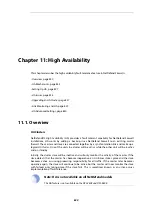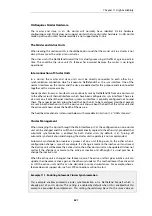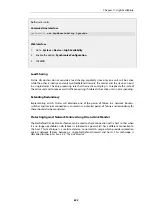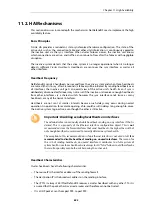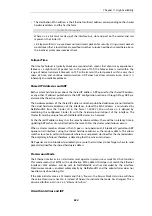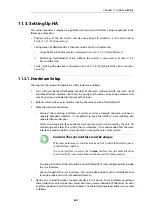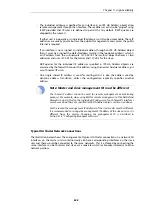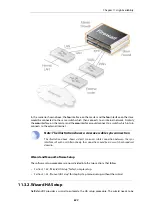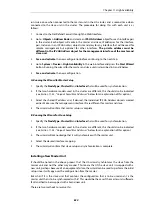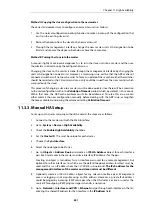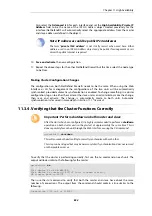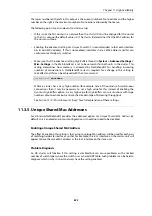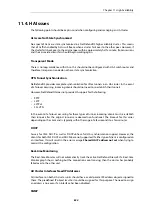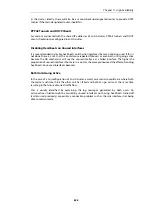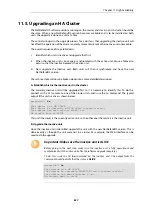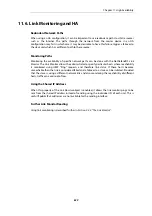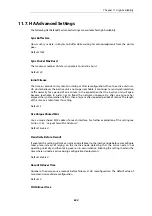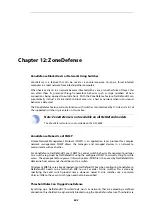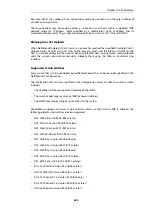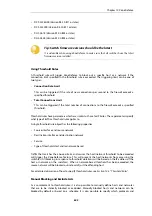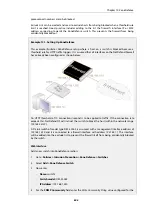
The lower number on the left in this output is the current number of connections and the higher
number on the right is the maximum number of connections allowed by the license.
The following points are also relevant to cluster setup:
•
If this is not the first cluster in a network then the
Cluster ID
must be changed for the cluster
so that it is unique (the default value is
0
). The
Cluster ID
determines that the MAC address for
the cluster is unique.
•
Enabling the advanced setting
Use Unique Share MAC
is recommended so that each interface
has its own MAC address. If this is not enabled, interfaces share a MAC address and this can
confuse some third party switches.
•
Make sure that the advanced setting
High Buffers
(found in System > Advanced Settings >
Misc. Settings in the Web Interface) is set to be
automatic
for both units in the cluster. This
setting determines how memory is allocated by NetDefendOS for handling increasing
numbers of connections. A NetDefendOS restart is required for a change in this setting to
take effect and this can be achieved with the CLI command:
gw-world:/> shutdown
Where a cluster has a very high number (for example, tens of thousands) of simultaneous
connections then it may be necessary to set a high value for this instead of enabling the
Dynamic High Buffers
option. A very high value for
High Buffers
can suit situations with large
numbers of connections but can have the disadvantage of increasing throughput.
See
Section 13.10, “Miscellaneous Settings”
for a full explanation of these settings.
11.3.5. Unique Shared Mac Addresses
For HA setup, NetDefendOS provides the advanced option
Use Unique Shared MAC Address
. By
default, this is enabled and in most configurations it should not need to be disabled.
Enabling a Unique Shared MAC Address
The effect of enabling this setting is that a single, unique MAC address will be used for each pair
of matching hardware interfaces so that, for example, the
lan1
interface on the master unit will
appear to have the same MAC address as the
lan1
interface on the slave unit.
Problem Diagnosis
An HA cluster will function if this setting is disabled but can cause problems with a limited
number of switch types where the switch uses a shared ARP table. Such problems can be hard to
diagnose which is why it is best to always have the setting enabled.
Chapter 11: High Availability
833
Summary of Contents for NetDefendOS
Page 30: ...Figure 1 3 Packet Flow Schematic Part III Chapter 1 NetDefendOS Overview 30 ...
Page 32: ...Chapter 1 NetDefendOS Overview 32 ...
Page 144: ...Chapter 2 Management and Maintenance 144 ...
Page 284: ...Chapter 3 Fundamentals 284 ...
Page 392: ...Chapter 4 Routing 392 ...
Page 419: ... Host 2001 DB8 1 MAC 00 90 12 13 14 15 5 Click OK Chapter 5 DHCP Services 419 ...
Page 420: ...Chapter 5 DHCP Services 420 ...
Page 573: ...Chapter 6 Security Mechanisms 573 ...
Page 607: ...Chapter 7 Address Translation 607 ...
Page 666: ...Chapter 8 User Authentication 666 ...
Page 775: ...Chapter 9 VPN 775 ...
Page 819: ...Chapter 10 Traffic Management 819 ...
Page 842: ...Chapter 11 High Availability 842 ...
Page 866: ...Default Enabled Chapter 13 Advanced Settings 866 ...
Page 879: ...Chapter 13 Advanced Settings 879 ...


